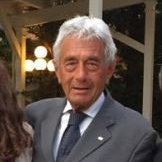Research on Flow and Heat Transfer in Metal Foams
A special issue of Materials (ISSN 1996-1944). This special issue belongs to the section "Porous Materials".
Deadline for manuscript submissions: closed (20 December 2022) | Viewed by 31834
Special Issue Editors
Interests: heat transfer and fluid flow; porous media; metal foams
Interests: heat transfer; cellular materials; porous materials; topology optimization; thermal management; bioheat transfer; multi-objective optimization; batteries’ thermal management; thermal storage; electronic cooling; hyperthermia
Special Issues, Collections and Topics in MDPI journals
Special Issue Information
Dear Colleagues,
Metal foams are a relatively new class of porous materials. Their high heat transfer, specific surface area, effective thermal conductivity, and their tortuosity make them promising in applications where heat transfer needs to be enhanced, such as heat exchangers, heat sinks, thermal energy storage with phase change materials, volumetric solar receivers, and so on.
Experimental or predictive approaches are used to analyze heat transfer in metal-foams-equipped engineering devices. The latter approach is promising because of the complex foam morphology, which makes experiments challenging. Heat transfer and fluid flow in foams are modeled either in continuous macro-scale models by volumetrically averaging governing equations over a representative elementary volume (REV), or at the discrete pore level by reconstructing the foam geometry. The reconstruction is carried out with reference either to real foam samples, employing techniques such as computed tomography, or to idealized foam samples, employing models like those of Kelvin or Weaire–Phelan. Discrete approaches are useful to derive the so-called closing coefficients (permeability, inertial factor, volumetric heat transfer coefficient), the knowledge of which is mandatory to close equations for continuous models.
The aim of this Special Issue is to collect original research articles on the most recent analytical, numerical, and experimental research in this field, in order to provide guidelines for future research directions. Potential topics include, but are not limited to:
- Open-cell foam microstructure;
- Metal-foams-equipped heat transfer devices, with either continuous or discrete models;
- Conductive, convective, and radiative heat transfer for pore-scale analyses.
Prof. Dr. Vincenzo Naso
Dr. Marcello Iasiello
Guest Editors
Manuscript Submission Information
Manuscripts should be submitted online at www.mdpi.com by registering and logging in to this website. Once you are registered, click here to go to the submission form. Manuscripts can be submitted until the deadline. All submissions that pass pre-check are peer-reviewed. Accepted papers will be published continuously in the journal (as soon as accepted) and will be listed together on the special issue website. Research articles, review articles as well as short communications are invited. For planned papers, a title and short abstract (about 250 words) can be sent to the Editorial Office for assessment.
Submitted manuscripts should not have been published previously, nor be under consideration for publication elsewhere (except conference proceedings papers). All manuscripts are thoroughly refereed through a single-blind peer-review process. A guide for authors and other relevant information for submission of manuscripts is available on the Instructions for Authors page. Materials is an international peer-reviewed open access semimonthly journal published by MDPI.
Please visit the Instructions for Authors page before submitting a manuscript. The Article Processing Charge (APC) for publication in this open access journal is 2600 CHF (Swiss Francs). Submitted papers should be well formatted and use good English. Authors may use MDPI's English editing service prior to publication or during author revisions.
Keywords
- metal foams
- heat transfer and fluid flow
- heat exchangers
- volumetric solar receivers
- thermal energy storage
- pore-scale analysis
Benefits of Publishing in a Special Issue
- Ease of navigation: Grouping papers by topic helps scholars navigate broad scope journals more efficiently.
- Greater discoverability: Special Issues support the reach and impact of scientific research. Articles in Special Issues are more discoverable and cited more frequently.
- Expansion of research network: Special Issues facilitate connections among authors, fostering scientific collaborations.
- External promotion: Articles in Special Issues are often promoted through the journal's social media, increasing their visibility.
- Reprint: MDPI Books provides the opportunity to republish successful Special Issues in book format, both online and in print.
Further information on MDPI's Special Issue policies can be found here.







